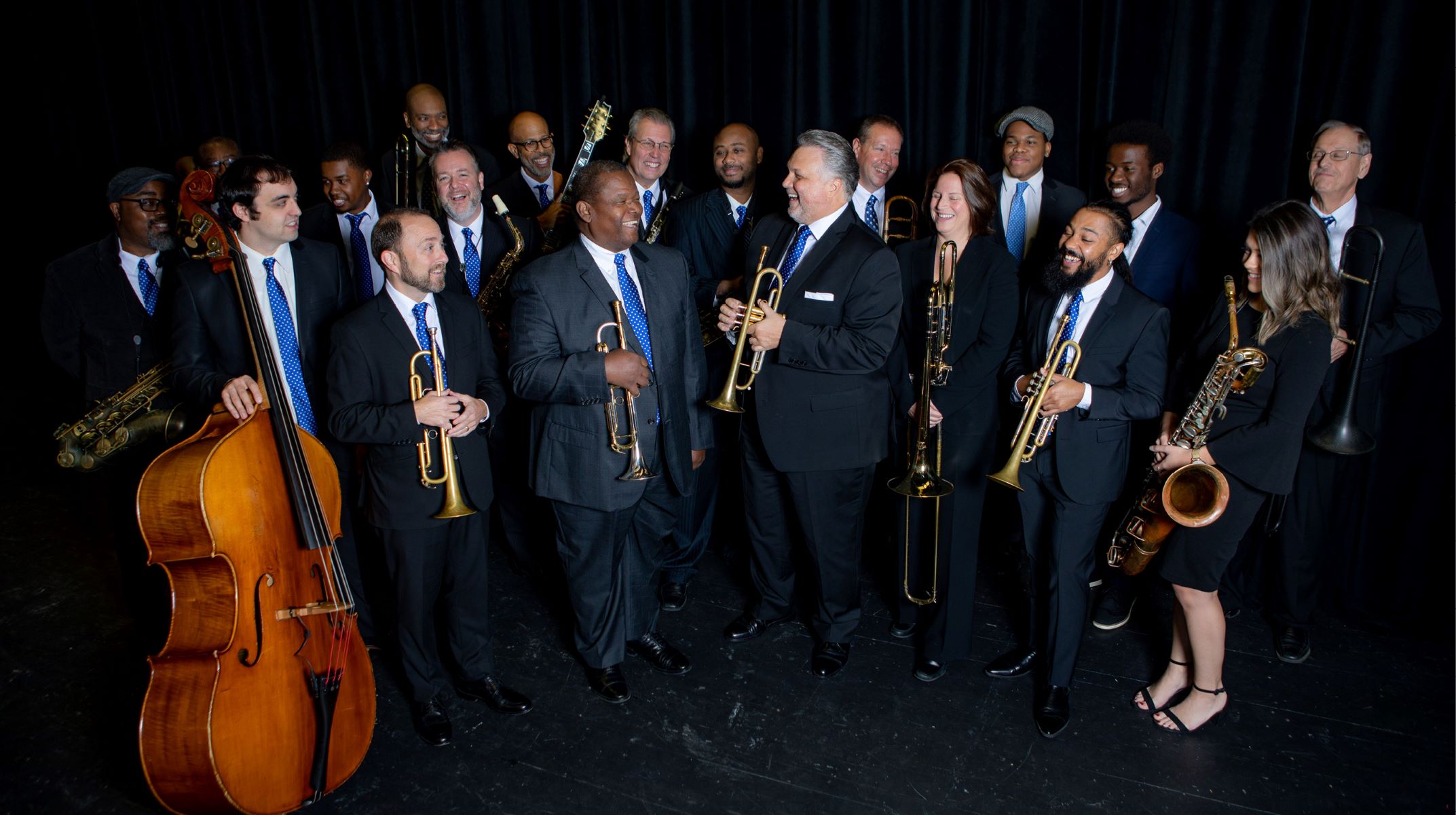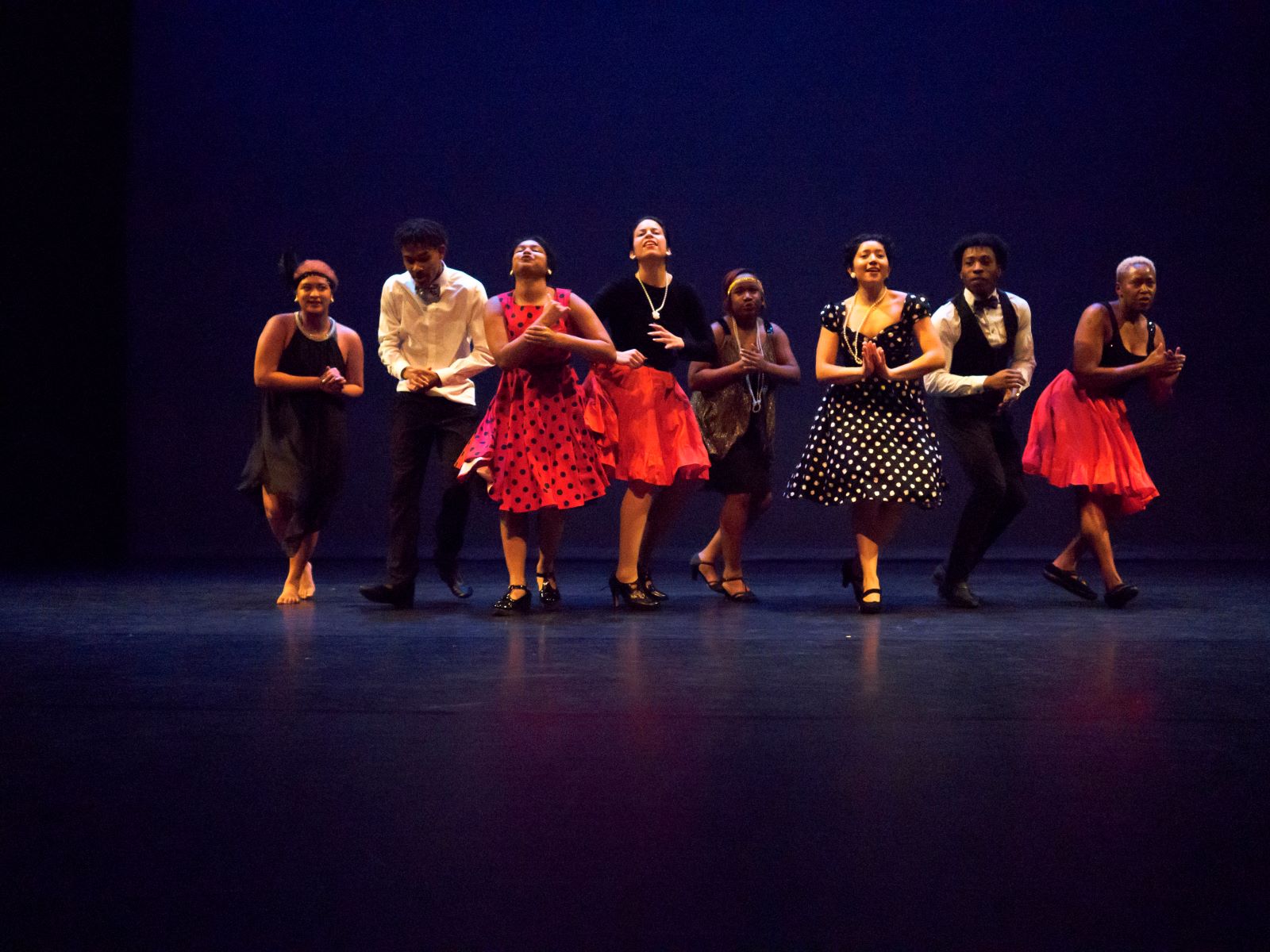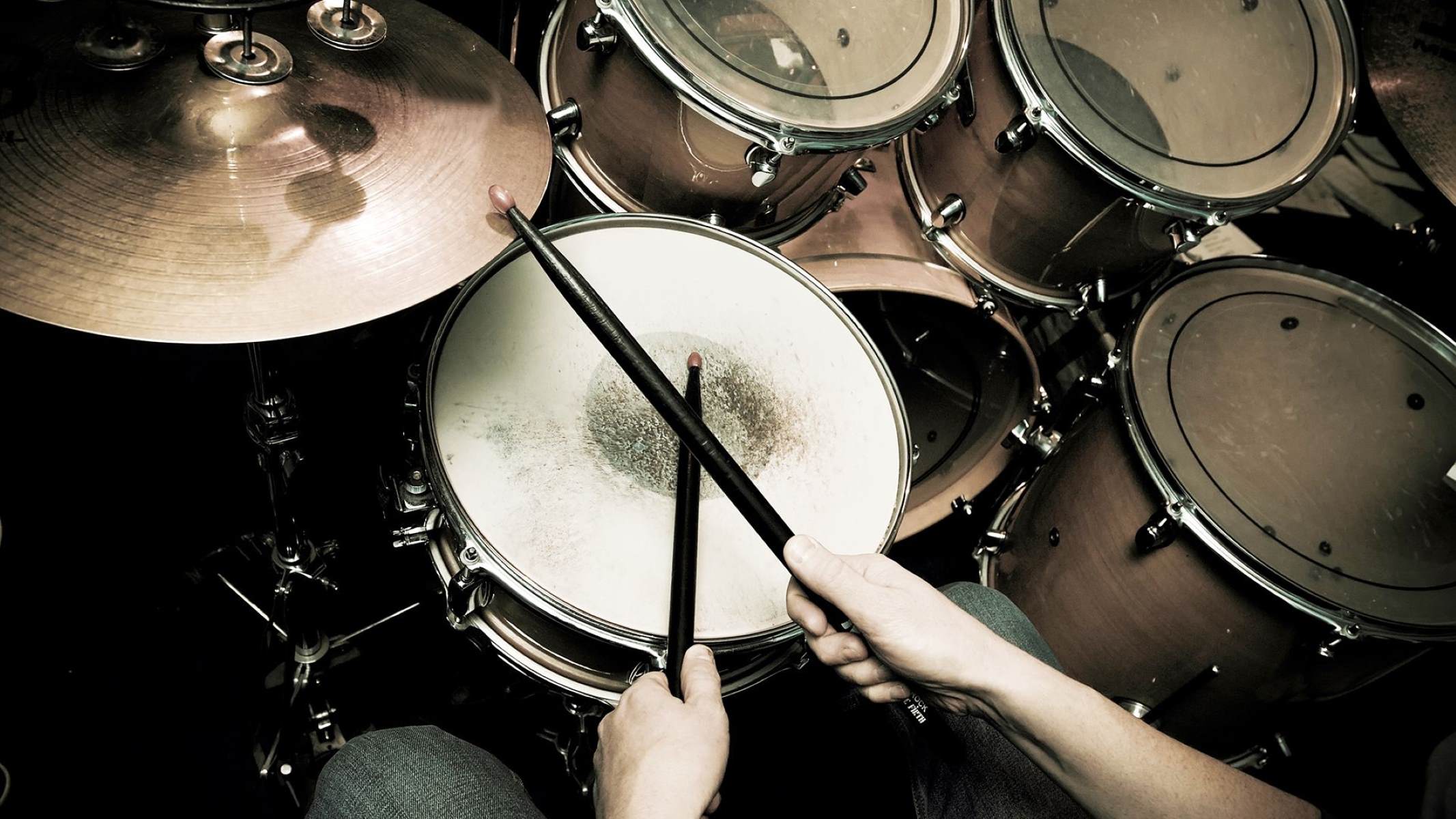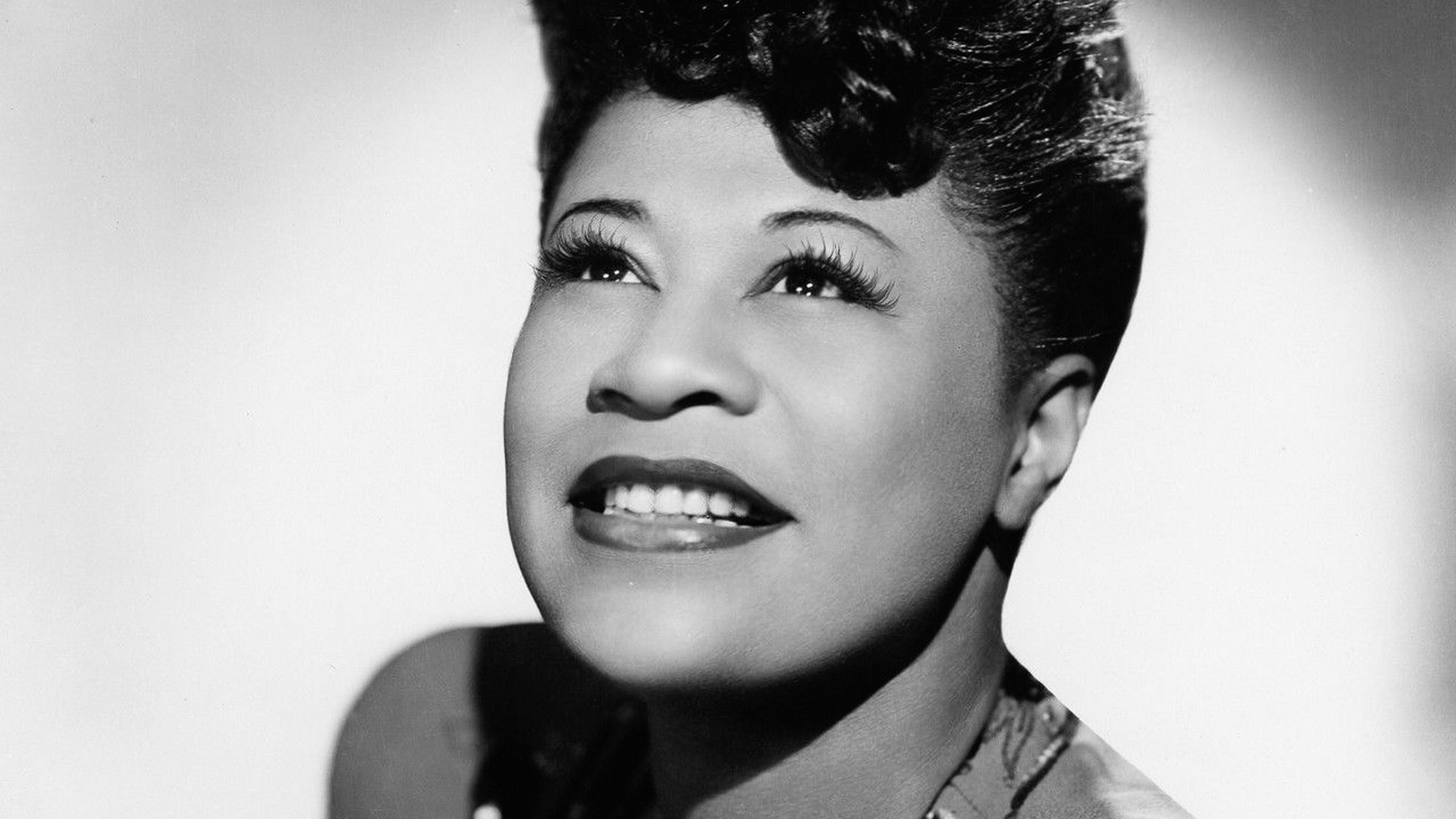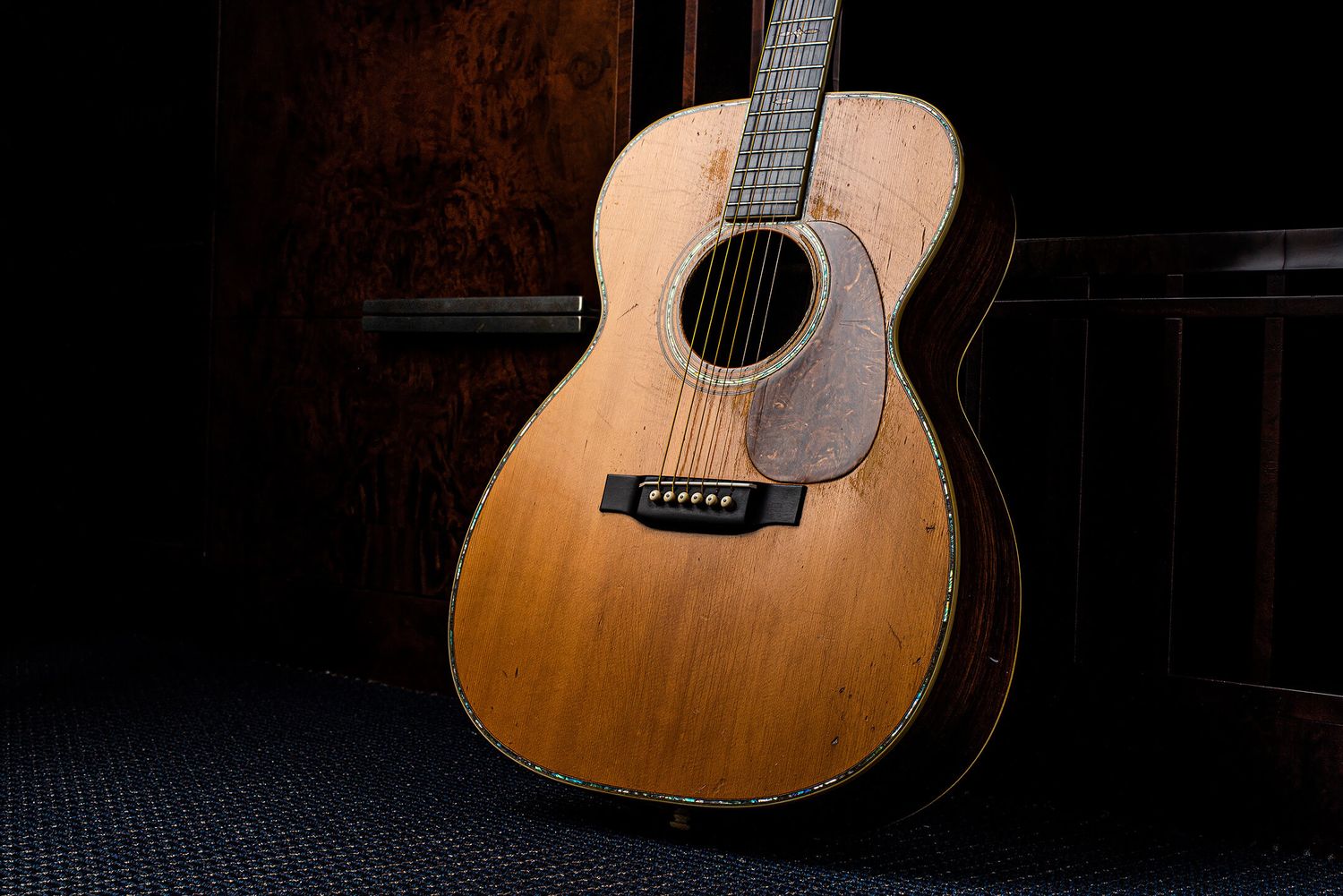

Jazz
Who Invented Jazz Music?
Modified: February 24, 2024
Discover the origins of Jazz, a musical genre that has revolutionized the world of music. Learn about the pioneers and the fascinating history behind the invention of Jazz.
(Many of the links in this article redirect to a specific reviewed product. Your purchase of these products through affiliate links helps to generate commission for AudioLover.com, at no extra cost. Learn more)
Table of Contents
Introduction
Jazz music is known for its improvisation, syncopation, and unique blend of musical styles. It has captivated audiences around the world for over a century and has become an important part of the cultural landscape. From its early roots in African and European musical traditions, to its evolution into various styles and subgenres, jazz has shaped and been shaped by the cultural and historical events of the times.
In this article, we will explore the fascinating history of jazz music, from its humble beginnings to its global influence. We will trace its early origins, delve into the birth of jazz in New Orleans, and shed light on the key figures and influences that shaped the genre. We will also examine the evolution of different jazz styles over time and how jazz music spread and became popular worldwide.
Jazz music is often described as a form of musical storytelling, allowing musicians to express themselves through improvisation and musical dialogue. It emerged in the late 19th to early 20th century, drawing inspiration from a diverse range of musical traditions, including African rhythms and melodies, European classical music, and the blues. The fusion of these disparate elements gave birth to a new and exciting musical genre.
At its core, jazz is characterized by its rhythmic complexity and harmonically rich chord progressions. It emphasizes individual expression and collective collaboration, with musicians engaging in spontaneous improvisation within the framework of a given piece. This improvisational element has made jazz a constantly evolving art form, allowing for endless variations and interpretations.
The birthplace of jazz is widely recognized as New Orleans, Louisiana. It was in the vibrant and culturally diverse neighborhoods of the city where jazz took root and flourished. The melting pot of French, Spanish, African, and Caribbean influences in New Orleans created a fertile ground for the development of this new music.
Throughout its history, jazz has been closely intertwined with social and cultural movements. It provided a voice for marginalized communities, such as African Americans, during times of segregation and racial discrimination. It also played a pivotal role in the cultural and artistic movements of the Harlem Renaissance in the 1920s, where jazz became a symbol of freedom, expression, and creativity.
Join us on this journey through the intriguing history of jazz music, as we explore the early origins, the birth in New Orleans, the key figures and influences, the evolution of styles, and the global spread of this revolutionary genre. Prepare to be captivated by the sounds, rhythms, and stories of jazz, and gain a deeper appreciation for the impact it has had on music and culture worldwide.
Early Origins of Jazz Music
The roots of jazz music can be traced back to the late 19th century, where it emerged from a blend of African and European musical traditions. African slaves brought with them a rich musical heritage, with rhythmic complexities and call-and-response patterns that would later become integral to jazz. European immigrants, on the other hand, brought their classical music traditions, which contributed to the harmonies and structures found in jazz.
The fusion of these musical influences happened in American cities like New Orleans, where diverse cultural communities interacted and shared their music. African rhythms and melodies mingled with European instrumentation and harmonic concepts, resulting in a unique and vibrant musical style.
One of the key precursors to jazz was the blues, a genre born out of the African American experience in the late 19th century. The blues expressed the struggles, joys, and sorrows of African Americans through heartfelt lyrics and a distinctive musical form. It served as a foundation for jazz, providing its characteristic emphasis on emotional expression and improvisation.
Another influential factor in the development of jazz was the emergence of ragtime music. Ragtime, with its syncopated rhythms and energetic piano melodies, gained popularity in the early 20th century. It was a crucial bridge between the classical music of Europe and the improvisational nature of jazz.
The rise of jazz was also fueled by social and cultural factors. The period following the abolition of slavery in the United States saw the growth of African American communities, where their music became an essential aspect of their cultural identity. As African Americans migrated to northern cities during the Great Migration, their music spread and continued to evolve.
One pivotal figure in the early origins of jazz was Buddy Bolden, a cornetist from New Orleans. Bolden is considered one of the pioneers of jazz, known for his passionate and improvisational playing style. Unfortunately, no recordings of his music exist, but stories and accounts from musicians of the time attest to his immense influence.
As jazz continued to develop and gain popularity, it became associated with the lively and vibrant nightlife of New Orleans. Brass bands and street parades became synonymous with the city’s culture, and jazz music became an essential part of these celebrations.
With its roots firmly planted in African and European musical traditions, as well as the unique cultural milieu of New Orleans, jazz music began its journey to becoming one of the most beloved and influential genres in the world. In the following sections, we will explore the birth of jazz in New Orleans and the key figures who helped shape this innovative musical form.
New Orleans and the Birth of Jazz
New Orleans, Louisiana, is widely regarded as the birthplace of jazz music. The city’s vibrant and diverse cultural landscape played a crucial role in shaping the unique blend of musical styles that would give birth to this revolutionary genre. In the late 19th and early 20th centuries, New Orleans was a melting pot of African, European, Caribbean, and Latin influences, creating a dynamic environment for musical exploration and innovation.
One of the key factors that contributed to the birth of jazz in New Orleans was the city’s rich African American community. The musical traditions brought by African slaves, including rhythms, vocal techniques, and traditional instruments, became an integral part of the city’s cultural fabric.
Brass bands and marching bands played a significant role in the development of jazz in New Orleans. These bands, consisting of cornets, trombones, clarinets, and drums, would roam the streets, performing at parades, funerals, and other social gatherings. The syncopated and energetic music they played laid the foundation for the rhythmic complexities and improvisational nature of jazz.
In addition to the influence of African traditions, French and Spanish colonial influences also contributed to the birth of jazz in New Orleans. The city’s long history of occupation by these European powers introduced elements of European music, such as harmonies and melodies, into the musical landscape.
New Orleans’ unique geography also played a role in the birth of jazz. Its location on the Mississippi River made it a bustling port and a hub for cultural exchange. The city welcomed musicians and travelers from all over the world, bringing new musical ideas and styles to the local scene.
One of the defining characteristics of jazz is its emphasis on improvisation. This aspect of jazz can be traced back to the “jam sessions” that were common in New Orleans. Musicians would gather in venues such as dance halls, saloons, and music clubs, and engage in spontaneous musical conversations, taking turns to solo and improvise on familiar tunes.
Notable jazz pioneers from New Orleans include Louis Armstrong, widely regarded as one of the most influential figures in jazz history. Armstrong, with his virtuosic trumpet playing and unique vocal style, helped popularize jazz globally and cemented New Orleans as the birthplace of the genre.
Jelly Roll Morton, another New Orleans native, was a key figure in bridging the gap between ragtime and jazz. Morton’s compositions showcased a level of complexity and sophistication that laid the groundwork for future jazz musicians.
As jazz gained popularity in New Orleans, it began to spread to other parts of the country. Musicians from New Orleans, seeking better economic opportunities and broader audiences, took their music on the road, spreading the sounds of jazz to cities like Chicago, New York, and beyond.
The birth of jazz in New Orleans marks a pivotal moment in music history. The city’s cultural diversity, along with the influence of African, European, and Caribbean traditions, created the perfect conditions for the emergence of this groundbreaking genre. As we delve deeper into the history of jazz, we will explore the key figures and influences that propelled jazz from its humble beginnings to its global significance.
Key Figures and Influences in Jazz Music
Jazz music has been shaped by numerous talented musicians and influential figures throughout its history. These individuals pushed the boundaries of the genre, introduced innovative techniques, and left an indelible mark on the evolution of jazz. Their contributions paved the way for future generations of jazz musicians and ensured the continued growth and popularity of this vibrant musical form.
Louis Armstrong: Known as “Satchmo,” Louis Armstrong is considered one of the most influential figures in jazz. His virtuosic trumpet playing, distinctive gravelly voice, and charismatic stage presence cemented his status as a jazz icon. Armstrong’s improvisational skills and innovative approach to phrasing set a new standard in jazz composition and performance.
Duke Ellington: Duke Ellington was a prolific composer, pianist, and bandleader who helped shape the sound of jazz in the early to mid-20th century. His orchestra, the Duke Ellington Orchestra, showcased his compositional genius and broke new ground with its rich harmonic palette, sophisticated arrangements, and experimentation with extended forms.
Charlie Parker: Charlie Parker, also known as “Bird,” was a groundbreaking saxophonist and composer. He played a pivotal role in the development of bebop, a subgenre of jazz known for its complex harmonies, fast tempos, and intricate improvisations. Parker’s innovative solos and melodic inventions continue to inspire generations of jazz musicians.
Miles Davis: Miles Davis was an influential trumpeter, bandleader, and composer who played a significant role in the evolution of jazz from the 1940s to the 1990s. Davis was at the forefront of several jazz movements, including cool jazz, modal jazz, and jazz fusion. His ability to adapt to different styles and push the boundaries of the genre made him one of the most important figures in jazz history.
Ella Fitzgerald: Ella Fitzgerald, known as the “First Lady of Song,” was one of the most celebrated jazz vocalists of all time. Her unparalleled vocal range, impeccable sense of timing, and ability to scat improvisations made her a true jazz innovator. Fitzgerald’s recordings and live performances continue to inspire and influence jazz singers to this day.
John Coltrane: John Coltrane was a pioneering saxophonist and composer who pushed the boundaries of jazz with his innovative approach to harmony and improvisation. His albums, including “Giant Steps” and “A Love Supreme,” are considered masterpieces of jazz composition and have had a profound influence on the direction of the genre.
These are just a few of the many key figures who have left an indelible mark on the history of jazz. Countless other musicians, composers, and bandleaders have contributed to the genre’s growth and evolution. Additionally, the influence of other musical genres, such as Latin music, funk, and rock, has also played a significant role in shaping jazz throughout the years.
It is the unique combination of individual talent, collective collaboration, and cultural exchange that continues to drive the vibrant and ever-evolving world of jazz. As we delve into the next section, we will explore the diverse and evolving styles of jazz music that have emerged over time.
Evolution of Jazz Styles
Jazz music has continuously evolved and diversified since its inception, giving rise to a wide array of styles and subgenres. Each new style represents a unique blend of influences, musical innovations, and cultural contexts. From the early roots of New Orleans jazz to the experimental sounds of avant-garde jazz, the evolution of jazz styles has been a testament to the genre’s adaptability and creativity.
New Orleans Jazz: Also known as Dixieland or Traditional Jazz, New Orleans jazz embodies the spirited and collective improvisation that characterized the early years of the genre. Drawing from African rhythms, blues, and brass band traditions, the music of New Orleans jazz featured polyphonic ensembles with vibrant horn sections and syncopated rhythms.
Swing: Swing emerged in the 1920s and reached its peak in the 1930s and 1940s, becoming the most popular form of jazz at the time. Characterized by its lively and danceable rhythms, big bands, and memorable melodies, swing music propelled jazz into the mainstream. Musicians such as Duke Ellington, Count Basie, and Benny Goodman became synonymous with the swing era.
Bebop: Bebop, also called bop, emerged in the 1940s as a reaction to the commercialization of swing music. It shifted the focus from danceable melodies to intricate harmonies and complex improvisations. Bebop musicians, including Charlie Parker, Dizzy Gillespie, and Thelonious Monk, pushed the boundaries of jazz with rapid tempos, angular melodies, and innovative chord progressions.
Cool Jazz: Cool jazz arose in the late 1940s and early 1950s as a more relaxed and introspective response to the intensity of bebop. Musicians such as Miles Davis, Dave Brubeck, and Chet Baker explored softer tones, slower tempos, and intricate arrangements. Cool jazz emphasized melodic improvisation and highlighted the individual virtuosity of the musicians.
Hard Bop: Hard bop emerged in the 1950s as a reaction to the rising popularity of rock and roll. It combined elements of bebop with soul, gospel, and blues, resulting in a more aggressive and bluesy sound. Artists like Art Blakey, Horace Silver, and Cannonball Adderley infused hard bop with infectious grooves and powerful solos.
Modal Jazz: Modal jazz gained prominence in the late 1950s and early 1960s, notably with Miles Davis’ landmark album “Kind of Blue.” It moved away from traditional chord progressions, focusing instead on scales or “modes” as the basis for improvisation. Modal jazz offered a more open and spacious approach, allowing for greater freedom and experimentation.
Free Jazz/Avant-Garde: Free jazz, or avant-garde jazz, emerged in the 1960s as a radical departure from traditional jazz conventions. It discarded harmonic and rhythmic structures, favoring free improvisation and collective creativity. Musicians like Ornette Coleman, John Coltrane, and Cecil Taylor embraced non-traditional techniques and unconventional instrumentation to push the boundaries of jazz even further.
These are just a few examples of the many styles that have shaped the evolving landscape of jazz. Fusion, Latin jazz, smooth jazz, and many other subgenres have since emerged, each adding its own unique flavor and innovation to the genre.
The evolution of jazz styles reflects not only the musical experimentation and exploration of its creators but also the changing social, cultural, and political contexts in which it has thrived. Jazz continues to reinvent itself, drawing inspiration from diverse musical traditions and reflecting the ever-evolving nature of human creativity.
Spread and Popularization of Jazz Music
Jazz music, with its infectious rhythms and captivating improvisations, began to spread beyond its birthplace of New Orleans in the early 20th century. Its popularity grew rapidly, and it soon became a global phenomenon, influencing and captivating audiences around the world.
The first major catalyst for the spread of jazz was the Great Migration in the early 20th century. African Americans, seeking better economic opportunities and escaping racial discrimination in the Southern United States, moved to northern cities such as Chicago, New York, and Detroit. They brought with them their music, including jazz, introducing it to new audiences and contributing to its growth.
The pioneering recordings of jazz musicians played a crucial role in popularizing the genre. The advent of phonograph records and radio allowed jazz music to reach a broader audience beyond the confines of live performances. Recordings by Louis Armstrong, Duke Ellington, and other influential jazz artists found their way into households across America and beyond, spreading the sounds and styles of jazz to distant corners of the globe.
Jazz also gained a foothold internationally through the influence of touring musicians. American jazz musicians, eager to explore new markets and share their music, embarked on international tours. They performed in Europe, South America, and other parts of the world, exposing audiences to the sounds of jazz and leaving a lasting impact on local music scenes.
One notable example of the global spread of jazz is its reception in Europe. In the early 20th century, American jazz musicians, such as Louis Armstrong and Sidney Bechet, found tremendous success and appreciation in European cities like Paris and London. European musicians also embraced jazz, incorporating it into their own compositions and improvisations.
The impact of jazz on European music culture was significant, leading to the formation of jazz clubs, festivals, and dedicated jazz scenes. The cultural exchange between American and European musicians fostered a rich and diverse jazz community, with musicians from both sides of the Atlantic influencing and inspiring one another.
Another important milestone in the spread of jazz was the influence it had on other musical genres. Jazz elements began to find their way into popular music styles such as swing, blues, R&B, and later rock and roll. The fusion of jazz with these genres created exciting new sounds and expanded the reach of jazz beyond its traditional boundaries.
The popularity of jazz continued to rise throughout the 20th century with the emergence of influential jazz festivals, such as the Newport Jazz Festival in the United States and the Montreux Jazz Festival in Switzerland. These festivals became platforms for jazz legends to perform and for up-and-coming artists to showcase their talent, further propelling the genre into the mainstream.
Television and film also contributed to the popularization of jazz. Jazz soundtracks in movies and television shows introduced the genre to new audiences and helped create an association between jazz music and sophistication, elegance, and artistic expression.
Today, jazz remains a vibrant and internationally celebrated genre. It continues to evolve, drawing inspiration from various musical traditions and embracing contemporary influences. Jazz education programs, jazz festivals, and dedicated jazz clubs around the world keep the spirit of jazz alive and ensure its continued popularity for generations to come.
The spread and popularization of jazz music is a testament to its universal appeal, the ingenuity of its creators, and its ability to transcend cultural and geographical boundaries.
Conclusion
Jazz music has undoubtedly left an indelible mark on the cultural and musical landscape of the world. From its humble origins in New Orleans, jazz has evolved into a global phenomenon, captivating audiences with its improvisation, syncopation, and rich musical tapestry. The early African and European influences, coupled with the social and cultural movements of the time, birthed an art form that continues to inspire and innovate.
Throughout its history, jazz has seen the contributions of numerous influential figures who pushed the boundaries of the genre and introduced new techniques and styles. From Louis Armstrong, Duke Ellington, and Charlie Parker to Miles Davis, Ella Fitzgerald, and John Coltrane, these innovators shaped the evolution of jazz and influenced generations of musicians.
The diverse styles that emerged within the jazz genre reflect its adaptability and ability to incorporate various influences. From the polyphonic ensembles of New Orleans jazz to the intricate harmonies of bebop, the relaxed vibe of cool jazz to the experimental sounds of avant-garde jazz, each style has contributed its own unique flavor to the jazz continuum.
The spread and popularization of jazz music came about through various channels, including recordings, radio, touring musicians, and cultural exchanges. Its influence reached beyond the borders of the United States, captivating audiences in Europe and other parts of the world. Jazz festivals, films, and television further propelled its popularity, cementing its reputation as a sophisticated and expressive art form.
As we celebrate the legacy of jazz, it is important to recognize its ongoing vitality. Jazz continues to evolve, embracing new influences and experimenting with innovative sounds. Its resilience and ability to adapt while maintaining its essence make it a timeless genre that continues to captivate listeners of all ages and backgrounds.
So, whether you find yourself tapping your feet to the swinging rhythms of the Big Band era or letting your mind wander with the avant-garde sounds of free jazz, there is no doubt that jazz music has a special place in the hearts of music lovers worldwide. Its ability to transcend boundaries and speak to the human spirit is a testament to the power of music and the remarkable legacy of jazz.


